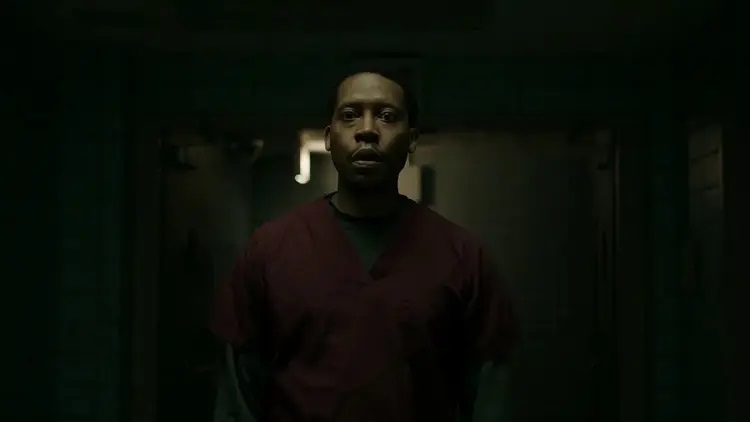
Alex Thompson’s Rounding is classified as a psychological thriller, and it has the necessary elements to categorize it as such. A guy has an issue from his past that causes him to relocate and restart. He then gets too involved in a case and starts seeing weird things. It’s all there, and some of the imagery is intriguing and haunting. But there’s something about the film that doesn’t make all of the supposed scary or mind-bending elements earned.
Namir Smallwood plays James, a determined medical resident who relocates to a rural location after the death of a patient in his hands at the hospital for which he worked. He thinks this fresh start will be good for him. The residents at his new hospital welcome him with open arms, and James has the opportunity to make an impact in his new place of work. One day, though, he comes across an asthma patient named Helen (Sidney Flanigan), whose health concerns have caused her to be admitted to the hospital on multiple occasions.
James becomes attached to Helen, after realizing that none of her reports show that she has any serious issues. When James begins to question Helen’s mother (Rebecca Spence) about the seriousness of her condition, he’s immediately told to leave. Soon, his obsession and anxiety turn into nightmares and random visions of dead, floating bodies, and hellhounds that look more like evil, demonic unicorns.
There is a certain level of tension throughout Rounding that is warranted. James’ flashbacks to the time in which he almost walked away from the medical field and how it plays into his current employment are the best elements of the movie. Not wanting to see another patient die, he tries with all his might to revive a patient who’s coding and it results in cracking ribs and spilling blood everywhere. A fleeing attempt then results in a broken leg that he hides throughout the rest of the movie. Why the other residents and his supervisor don’t question the severity of it is beyond me.
Smallwood is the shining light in Rounding, as he captures the emotional impact of someone who’s steadfast and willing to save each life. The obsession and panic in his eyes are natural, and his attachment to everyone with whom he interacts is great. There’s a light moment in which James gets scolded by a patient to whom he has to inform of the patient’s cancer diagnosis. James stumbles and comes off in a more blunt form than anticipated, and the patient criticizes him for delivering the message with such an approach.
Where Rounding falters is in the more unnecessary horror elements, such as the aforementioned hellhound unicorn things and the floating dead body. What is supposed to serve as a shock seems more silly than intended. But Thompson’s direction, in some regards, works when James’ injury becomes a bit too much, and the camera zooms in on just how bad the injury is. Even fans of movies that revel in grotesqueness may wince at one particular scene.
Had the film found a more stable ground, Rounding would have worked as a profile of the mindset of a resident whose obsession gets the best of him. In some cases, it’s there. But when the horror element is thrown in, the film’s overall impact is lost, and the result becomes something that is more of an undercooked genre mashup that doesn’t fire on all cylinders.